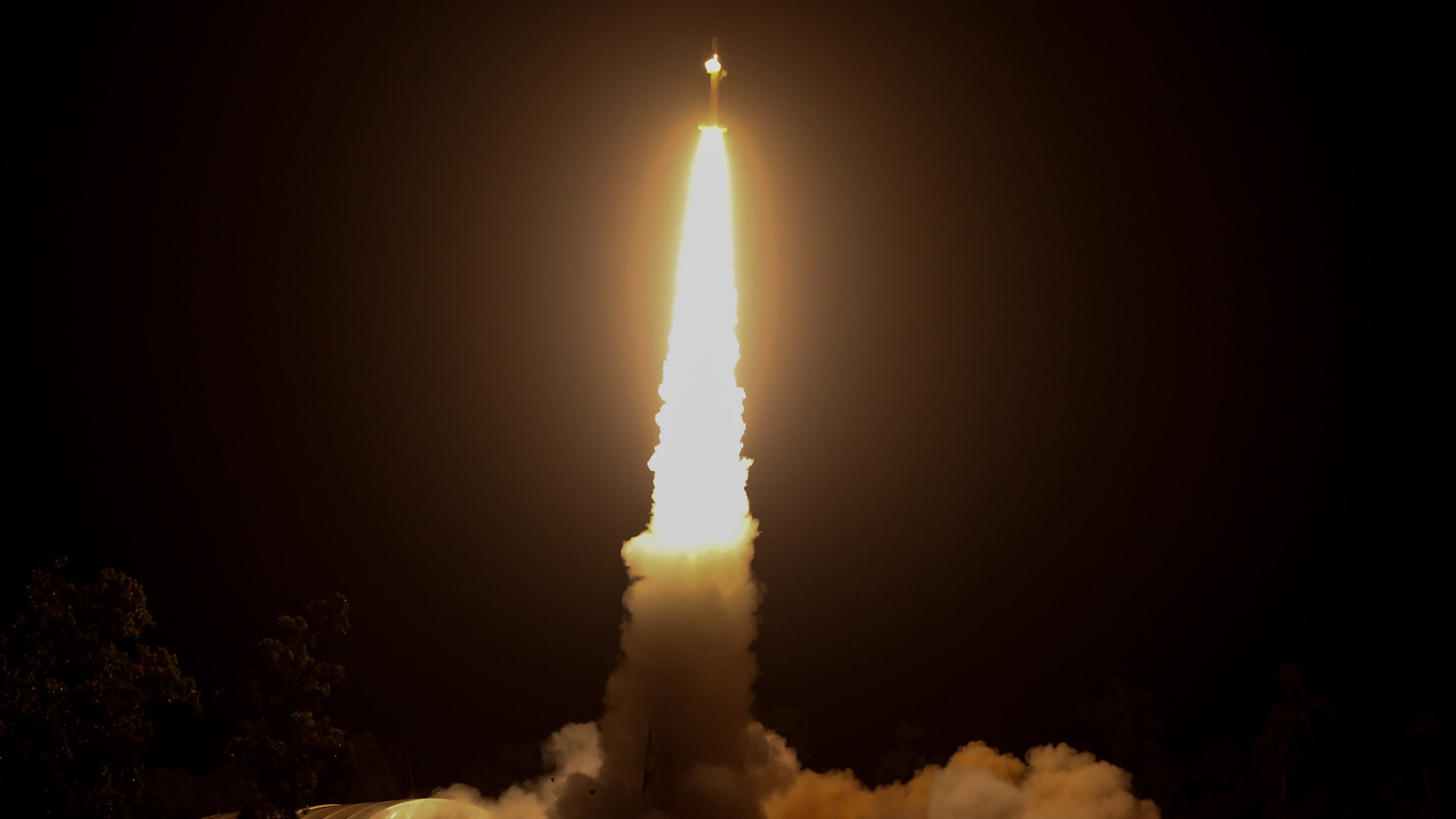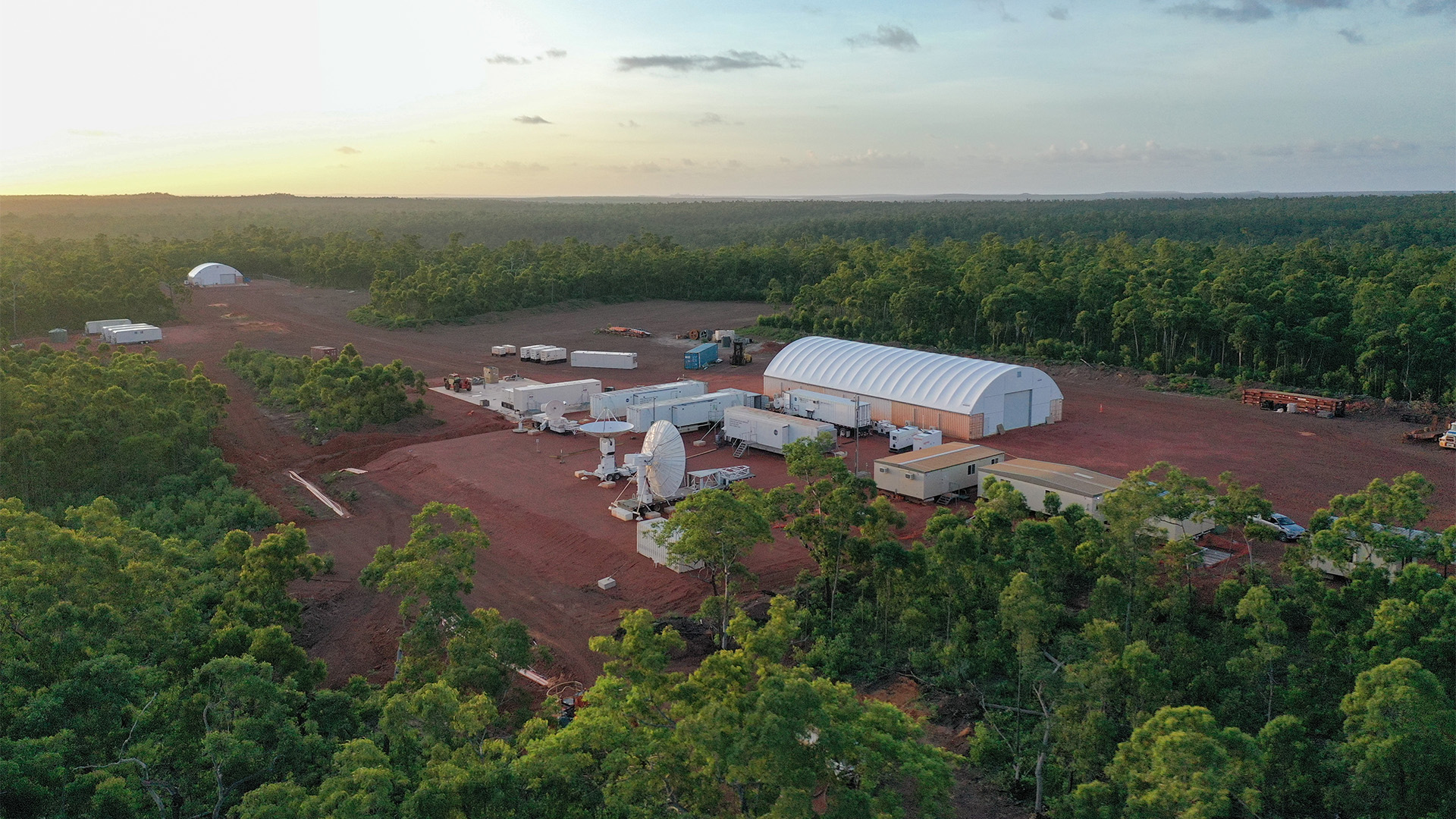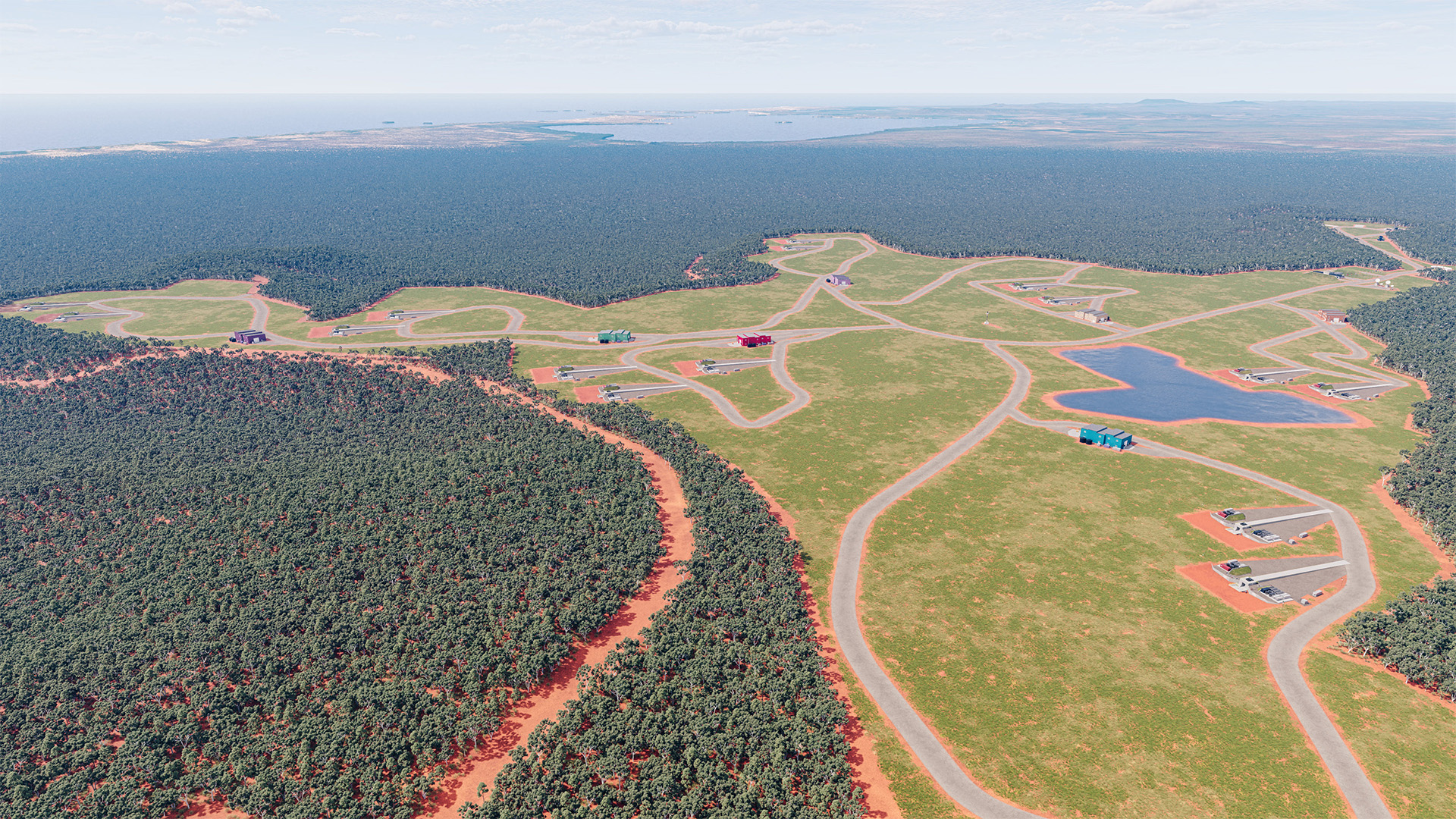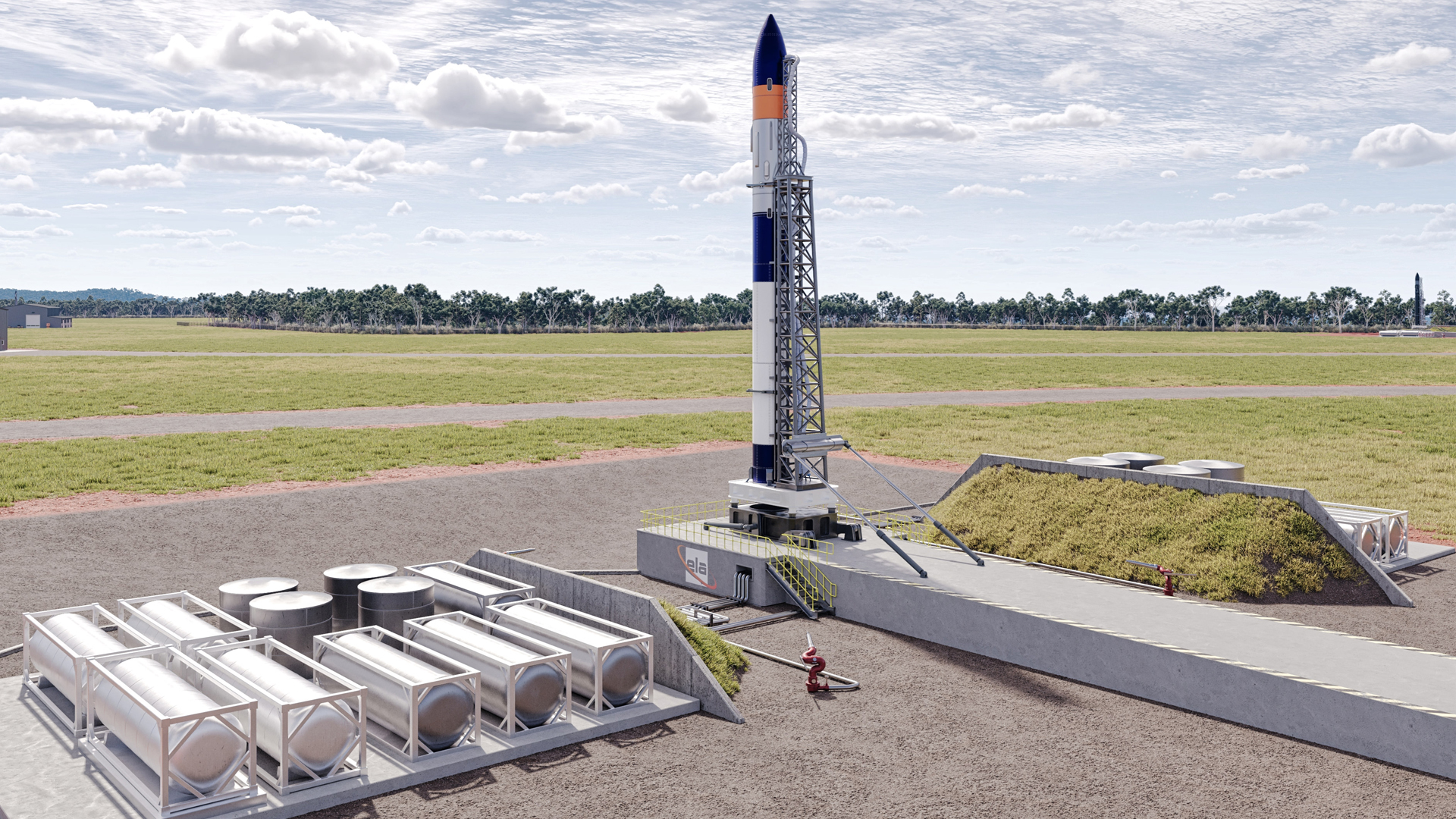
Space, the final frontier, was once the domain of defence, science and research groups. But now private commercial companies are realising its stratospheric potential to offer solutions to many problems back here on Earth.
With only a handful of orbital launch sites around the world and their capacity already tied up by larger rocket companies, like SpaceX and Blue Origin, multiple new spaceport projects are being developed to meet booming demand.
The UK is a particular hotspot. Spaceport Cornwall opened last year to facilitate Britain’s first ever rocket launch into space, SaxaVord in the Shetland Islands opened last month, and Space Hub Sutherland, also in Scotland, is under construction.
On the back of a successful landing on the far side of the moon in June, China is spending an eyewatering $3.05bn on a new spaceport in the city of Ningbo in Zhejiang province, plus another $1bn on a development at Djibouti in Africa.
Australia is also betting big on space with three projects on its books. The first, Arnhem Space Centre in the Northern Territory, was completed in 2022 to host Nasa's first rocket launch from a commercial spaceport outside the US. Meanwhile, Canada is counting down to blast off at its first spaceport, in Nova Scotia in 2025.
Spaceports are a cosmic real estate opportunity because they attract inward investment, foster economic growth, stimulate research and development and create new jobs. But getting projects off the ground can be tricky given the physical, environmental and legislative constraints. Large footprint launch pads and noisy rocket boosters have environmental implications for habitats and species, raising the hackles of environmental campaigners and local communities. Additionally, remote locations can cause logistical challenges for construction and operation.
Despite the challenges, rising demand for access to space will see many more spaceports embark on this difficult journey. Matt Archer, head of launch at the UK Space Agency, says: “When I joined the Agency six years ago, there were fewer than 1,000 satellites in orbit, now we are up to about 6,000 and by the end of this decade we'll be somewhere in the region of 15,000, or more. After that, attention will turn to satellite replenishment cycles [replacing failed units] so there will be constant ongoing demand.”

Virgin Orbit launching from Spaceport Cornwall
Circular thinking
The space race began as a competition between two superpowers, but now some 90 nations operate in the inky blackness and, according to figures from the World Economic Forum, the sector is predicted to grow to $1.8tr in the next decade.
A key factor in this growth is the massive shift from using large and expensive geostationary satellites, whose position is locked relative to the earth’s rotation, to constellations of small lightweight satellites in multiple lower orbits.
These vehicles can be used for an increasingly diverse number of applications, from extending broadband coverage to remote areas, to tracking climate change, agriculture and pollution, to relaying data from smart homes and self-driving cars. Companies are even leveraging microgravity to create more uniform and structurally improved protein crystals for medical applications.
“Launching a satellite is now relatively affordable,” says Ross Hulbert, head of engagement at Spaceport Cornwall. “You're talking about tens of thousands of pounds, rather than tens of millions, which means universities and SMEs with funding can demonstrate a technology, or an idea and work out if they have a business model, where before it was only accessible to the biggest companies or organisations.”
With an estimated 25,000 satellites aiming to hitch a ride into orbit over the next 10 years, finding places to launch them is a significant challenge. Particularly as large rocket launch providers experience a backlog, and ever-shifting geo-politics rules out access to sites within certain countries.
Location is everything when it comes to building spaceports, particularly when it comes to reaching specific orbits essential for different satellite functions. The Earth rotates fastest at the equator (about 1,400 feet per second) giving a boost to rockets targeting geostationary orbit and saving fuel. Locations at higher latitudes, with reduced earth spin, are better suited to reaching polar orbits running north-south - ideal for small satellites performing functions such as earth observation or communications.
Islands and coastal locations away from population centres are common sites for spaceports due to minimal risk of harm from debris in the event of a launch failure. Much of Europe is ‘space locked’ and therefore unable to send rockets over neighbouring countries – northern Scotland and parts of Scandinavia being the exceptions.
“Ideally, you want to be launching over empty sea,” explains Scott Hammond, deputy CEO of SaxaVord, which is aiming to send up to 30 rockets a year from Unst on the northernmost of the Shetland Islands. “It’s all about location, you want that really high latitude, and clear launch paths,” he adds.
Situated at 12.4o south of the equator in Australia’s Northern Territory, Arnhem Space Centre exploits the country’s low population density to achieve azimuths (angle of launch) over land.
“Our location has very stable weather, minimal jet stream and access to the major town of Nhulunbuy just 35km away,” says Amanda Hudswell, head of communications at operator Equatorial Launch Australia. “As an ex-mining town, there is a lot of infrastructure we benefit from, including a B-737 capable airport and a deep-water port with roll-on, roll-off access, plus shopping centres, cafes, restaurants and accommodation.”
Remotely connected
This underlines the importance of balancing remoteness with good access to transportation routes, supply chain hubs and a trained workforce needed for construction and operation.
Shetland might feel like living on the edge of the world, but it is close to the UK’s second largest oil terminal and oil and gas engineering companies have been building kit for SaxaVord’s launch pads. It is serviced by daily cargo/passenger ferries from Aberdeen and a busy airport, and benefits from a 10gb fibre-optic connection and even 5G.
Australia’s Northern Territory Government has identified space as critical to the future of the economy and, according to Hudswell, Arnhem Space Centre is “helping the region’s economic stability as it transitions away from its mining heritage and towards industries of the future.”
Space Hub Sutherland’s operator Orbex has been working with Highlands and Islands Enterprise (HIE) for five years in a relationship that it says is delivering high-value jobs to the Scottish economy. Its production and testing facilities, located in Forres in Morayshire, now employ over 130 people, including remote workers.
“Economic impact assessments commissioned by HIE concluded the facility has the potential to generate almost £1bn in gross value added for the economy over the next three decades,” a spokesperson for Orbex said.
Seeking to improve skills and employment opportunities for local people, Spaceport Cornwall engaged with the local council to fund a dedicated education outreach programme targeting every school, college and university in Cornwall. "We want to make sure that our young people have the opportunity to access these careers,” says Hulbert. “Cornwall Council has invested more than the national government to make sure that young people can access further education and university level courses to get the necessary skills.”
“When I joined the Agency six years ago, there were fewer than 1,000 satellites in orbit, now we are up to about 6,000” Matt Archer, UK Space Agency
Ground control
Political support can come in handy during a fraught planning process, when spaceport projects come up against sensitive environmental concerns and a stringent licensing regime.
A key challenge when building in remote, natural settings is ensuring the land is protected. Space Hub Sutherland is being built on a peat bog owned by Scottish crofters; a peat management plan was developed by Orbex to illustrate that any peat lifted during construction will be re-used to repair large areas of degraded peatland. Bird nesting season will also prevent launches and rocket ‘hot firing’ between late May and the end of June.
SaxaVord needed scheduled monument consent to build its launch pad on top of RAF buildings constructed in the 1950s as part of the Chain Home early warning radar network. “We weren’t quite building on Stonehenge, but planning took a chunk of time,” says Hammond. “We had backup from the UK Space Agency saying the project will be nationally significant, which is the only reason you can do anything on a scheduled monument.”
The spaceport permitting process is similarly onerous. Spaceports in the UK must apply for an operator licence, a spaceport licence and a range control licence, covering the coordination of space flight activities. In addition, SaxaVord had to apply for an airspace change to create a segregated route for its rockets. “If you think planning is difficult, try getting an airspace change. That's been a three-year process on its own,” confesses Hammond.
Shooting rockets into the void on a plume of superhot gas is an inherently risky endeavour. Spaceports essentially function as testing grounds for innovative technologies and therefore need flexible business models to cope with changing clients and circumstances.
Virgin Orbit's historic first launch from Spaceport Cornwall in January last year ended in failure when the rocket suffered an anomaly after reaching space. In the weeks that followed, financial troubles at the company culminated in it shutting down.
This might have spelled disaster for the spaceport, but instead, a previous decision to open a new Space Systems Operations Facility to capitalise on excitement around the launch attracted multiple businesses and potential partners for future launches. “The building opened in April 2023, three months after the first launch, and as of May 2024 it is essentially full,” says Hulbert.
It’s another sign that the space economy is set to thrive long into the future, bringing benefits both at home and perhaps one day in a galaxy far, far away.
The UK has ambitions to become Europe’s leading provider of small satellite launches by 2030
With the right geography to access valuable polar and sun-synchronous satellite orbits, Britain’s domestic launch capability was proven in January 2023 with its first ever horizontal rocket launch, from Spaceport Cornwall.
This will be followed later this year by its first vertical launch, from SaxaVord spaceport in Scotland, and further launches planned at Space Hub Sutherland when it is completed.
Four other spaceport projects - Spaceport 1, Spaceport Machrihanish, Glasgow Prestwick Spaceport, and Llanbedr Spaceport on the coast of Wales - are mooted but none have a launch operator committed to building out facilities.
According to Matt Archer, head of launch at the UK Space Agency, the main real estate challenge for spaceport development is commitment. “These are not easy projects, they take time and the UK has a bit of a reputation for not doing infrastructure well,” he says. “That’s why both [approved] spaceports in Scotland are being really careful to make sure they build the things they need to do their job well and are making good progress.”
Despite growing demand for access to space, the recent tightening of financial markets and rising interest rates have increased pressure on launch vehicle operators, says Archer. “Companies with the most mature technology are raising revenue, those that don’t have started to either exit the market or recognise that they're probably not going to make it,” says Archer. “We expect the market to consolidate.”






